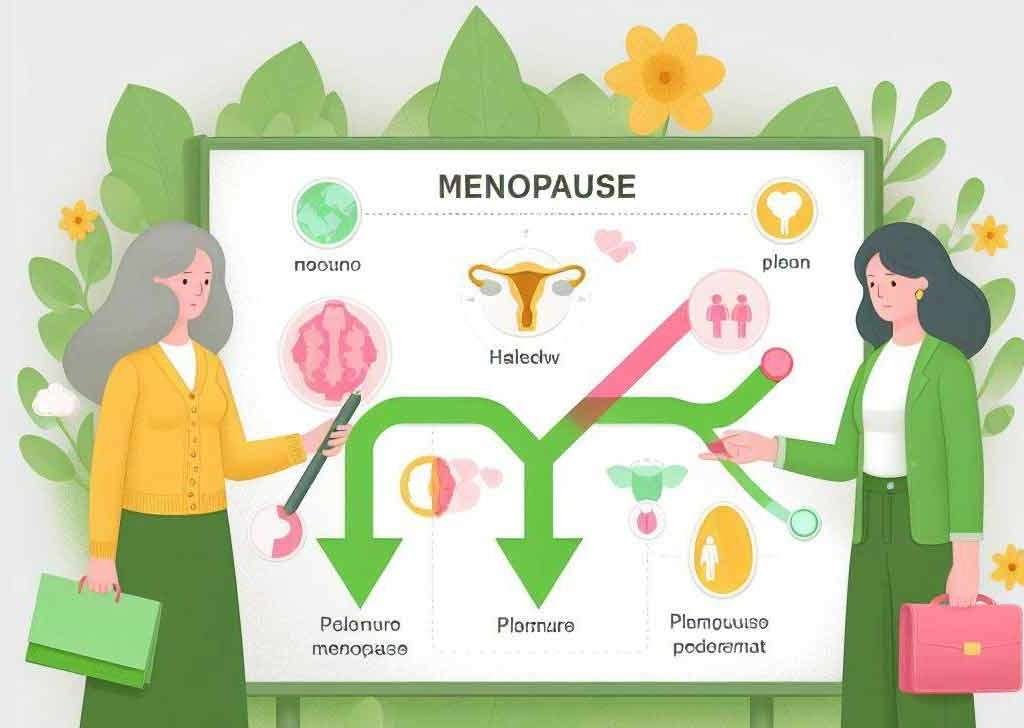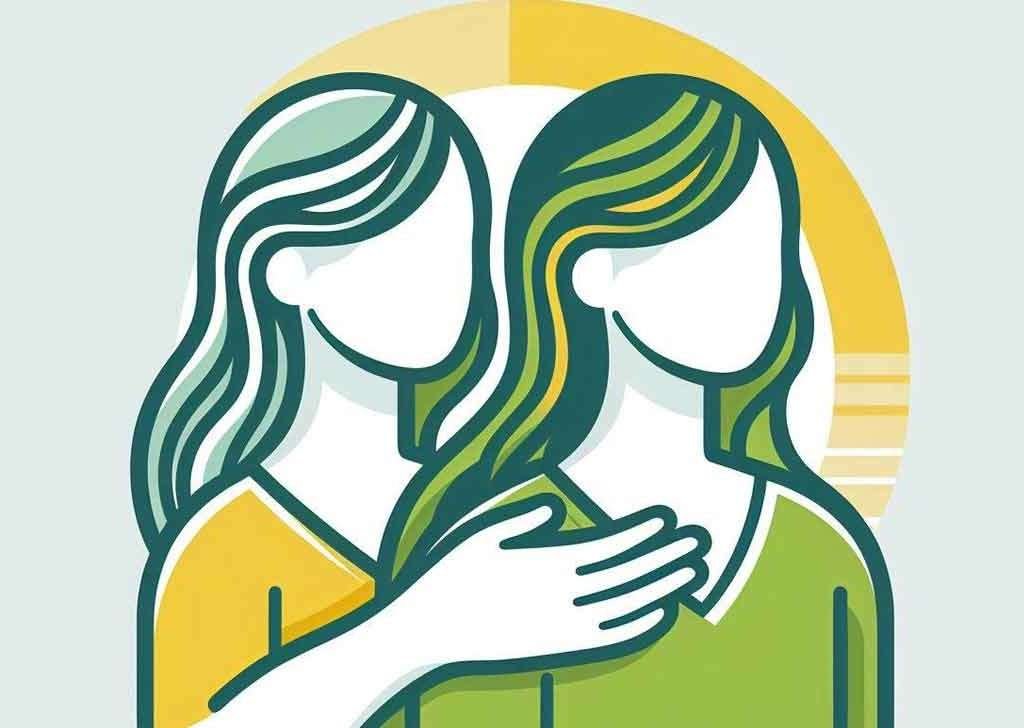Menopause Roadmap: Navigating the Change
Menopause is a natural biological process that marks the end of a woman’s menstrual cycle. It typically occurs in women in their late 40s or early 50s. During this time, the ovaries produce less estrogen and progesterone, leading to various physical and emotional symptoms. These symptoms can include hot flashes, night sweats, mood swings, and difficulty sleeping. The transition into menopause, known as perimenopause, can last for several years and may bring about irregular periods and other discomforts. Understanding the changes and seeking support from healthcare professionals can help women manage the effects of menopause and maintain their overall well-being. What Is Menopause? Menopause signifies the end of a woman’s reproductive period. It typically occurs in the late 40s or early 50s and is marked by the cessation of menstruation. During this stage, the body experiences hormonal shifts, leading to symptoms like hot flashes, mood swings, and sleep disturbances. Definition Of Menopause Menopause is a natural biological process that marks the end of a woman’s menstrual cycle. It is diagnosed after a woman has gone without a period for 12 consecutive months. During this stage, the ovaries no longer release eggs and hormone levels, specifically estrogen and progesterone, decline significantly, leading to various physical and emotional changes in a woman’s body. Typical Age Of Onset The average age for menopause onset is around 51 years old, but it can occur anytime between the ages of 45 and 55. However, some women may experience menopause earlier due to factors such as genetics, smoking, certain medical treatments, or surgical removal of the ovaries. It’s important to note that menopause is a gradual process, and the symptoms may begin years before a woman’s last period. Symptoms Of Menopause Experiencing menopause is a natural phase in a woman’s life that typically occurs in her late 40s or early 50s. During this period, the body undergoes significant hormonal changes, leading to various physical and emotional symptoms. Understanding and recognizing these symptoms is crucial in managing the transition and seeking the appropriate support. The symptoms of menopause can vary widely from woman to woman, but they generally fall into two categories: physical and emotional. Physical Symptoms Of Menopause The physical symptoms of menopause can manifest in different ways, making the experience unique for each individual. These symptoms may include hot flashes, night sweats, vaginal dryness, changes in libido, weight gain, joint pain, and urinary incontinence. Moreover, women may also experience irregular periods, decreased breast fullness, thinning hair, and dry skin as a result of hormonal fluctuations. These physical symptoms can disrupt daily activities and impact overall well-being, emphasizing the importance of managing them effectively. Emotional Symptoms Of Menopause Menopause can also bring about emotional symptoms that affect mental and psychological health. Mood swings, irritability, anxiety, and fatigue are common emotional experiences during this phase. Additionally, women may encounter difficulty concentrating, memory problems, and decreased motivation. These emotional symptoms can significantly impact daily life and relationships, warranting attention and support. Causes Of Menopause Menopause is a natural biological process that occurs in women, typically between the ages of 45 and 55, signaling the end of the menstrual cycle. Understanding the causes of menopause can help women navigate this transition with greater ease. Several factors contribute to the onset of menopause, including hormonal changes and ovarian aging. Hormonal Changes Hormonal changes are one of the primary causes of menopause. As women age, their reproductive hormone levels fluctuate, leading to a decline in estrogen and progesterone production by the ovaries. These hormonal shifts can result in irregular menstrual cycles and eventually lead to the cessation of menstruation, marking the onset of menopause. Ovarian Aging Ovarian aging is another key factor contributing to menopause. Women are born with a finite number of eggs in their ovaries, and as they age, the quantity and quality of these eggs diminish. This natural process, known as ovarian aging, ultimately leads to the cessation of ovulation and the decline in reproductive hormone production, culminating in menopause. Stages Of Menopause Menopause is a natural biological process that all women go through as they age. It marks the end of a woman’s reproductive years and comes with various physical and emotional changes. Understanding the stages of menopause is crucial for women to navigate this transformative time in their lives. There are three distinct stages of menopause: perimenopause, menopause, and postmenopause. Perimenopause Perimenopause is the first stage of menopause and can start several years before menopause actually occurs. This phase typically begins in a woman’s 40s, but it can start as early as the 30s. During perimenopause, the ovaries gradually produce less estrogen, causing menstrual cycles to become irregular. Women may experience hot flashes, mood swings, and other symptoms associated with hormonal fluctuations. While fertility declines during perimenopause, it is still possible to become pregnant. Menopause Menopause is the second stage of menopause and is officially diagnosed after a woman has gone 12 consecutive months without menstruating. The average age of menopause is around 51 years old, but it can vary. During menopause, the ovaries stop releasing eggs, and estrogen levels significantly decrease. This hormonal shift leads to a cessation of menstrual periods and a range of symptoms such as vaginal dryness, sleep disturbances, and mood changes. Women may also experience symptoms like weight gain and bone loss, which can increase the risk of osteoporosis. Postmenopause Postmenopause is the third and final stage of menopause. It encompasses the years after menopause has occurred. During this stage, most menopause symptoms tend to improve or subside. However, women are still at an increased risk for certain health conditions, including heart disease and osteoporosis, due to the long-term effects of decreased estrogen. It is crucial for women to maintain a healthy lifestyle and seek medical care to manage any ongoing health concerns. Diagnosis And Testing Diagnosis and testing for menopause involves assessing symptoms, hormone levels, and medical history, enabling healthcare providers to provide an accurate diagnosis and appropriate treatment options. Early identification ensures effective
Menopause Roadmap: Navigating the Change Read More »


